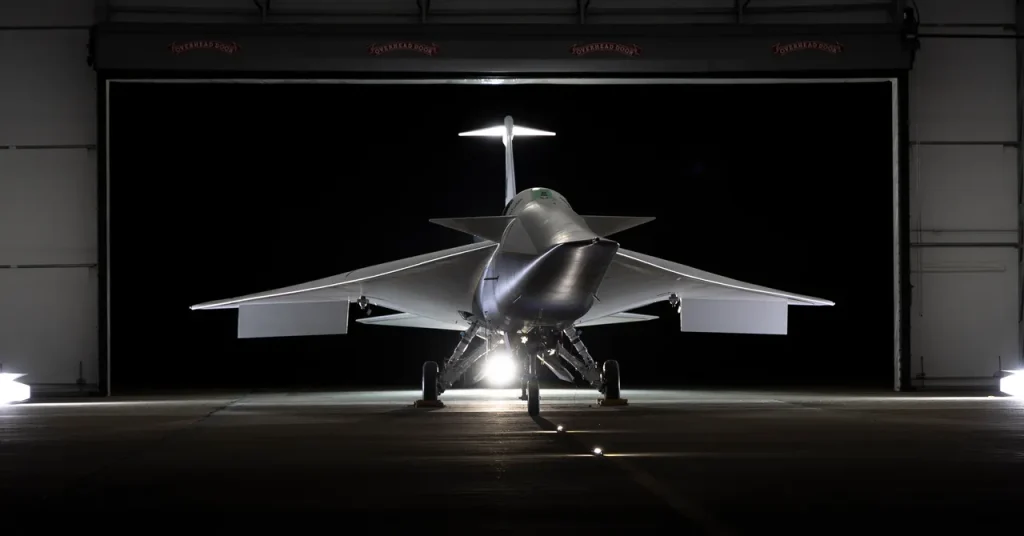The X-59 will generate a lower “sonic thump” thanks to its unique design. It was given a long, slender nose that accounts for about a third of the total length and breaks up pressure waves that would otherwise merge on other parts of the airplane. The engine was mounted on top of the X-59’s fuselage, rather than underneath as on a fighter jet, to keep a smooth underside that limits shock waves and also to direct sound waves up into the sky rather than down toward the ground. NASA aims to provide key data to aircraft manufacturers so they can build less noisy supersonic planes.
A Jet Like No Other
The X-59 is a single-seat, single-engine jet. It is 99.7 feet long and 29.5 feet wide, making it almost twice as long as an F-16 fighter jet but with a slightly smaller wingspan. The X-59’s cockpit and ejection seat come from the T-38 jet trainer, its landing gear from an F-16, and its control stick from the F-117 stealth attack aircraft. Its engine, a modified General Electric F414 from the F/A-18 fighter jet, will allow the plane to cruise at Mach 1.4, about 925 mph, at an altitude of 55,000 feet. This is nearly twice as high and twice as fast as commercial airliners typically fly.
Perhaps the most striking change on the X-59 is that it does not have a glass cockpit window. Instead, the cockpit is fully enclosed to be as aerodynamic as possible, and the pilot watches a camera feed of the outside world on a 4K monitor known as the eXternal Visibility System.
“You can’t see very clearly through glass when you look at it at a very shallow angle, and so you need to have a certain steepness of the view screen to have good optical qualities, and that would develop a strong shock wave that would really corrupt the low-boom characteristics of the airplane,” says Michael Buonanno, the air vehicle lead for the X-59 at Lockheed Martin.
The X-59 has repurposed components of other NASA aircrafts.
COURTESY OF: Lockheed Martin
For this first flight, the X-59 flew at a lower altitude and at about 240 mph, according to NASA. During future tests, the jet will gradually increase its speed and altitude until it goes supersonic, NASA said, which occurs at about 659 mph at 55,000 feet, or 761 mph at sea level. The speed of sound varies according to temperature and to a lesser degree pressure, causing it to decrease at higher altitudes.
“The primary objective on a first flight is really just to land,” James Less, a project pilot for the X-59 who will be conducting future flights, tells WIRED. Less flew an F-15 fighter jet in formation with the X-59 as a support aircraft during the flight, observing the new experimental jet for any issues.


